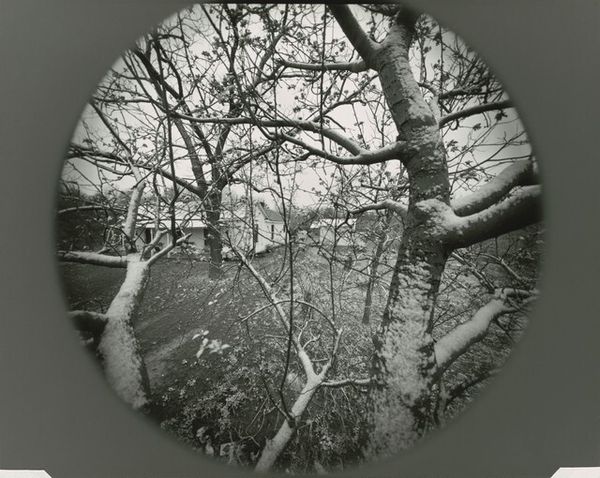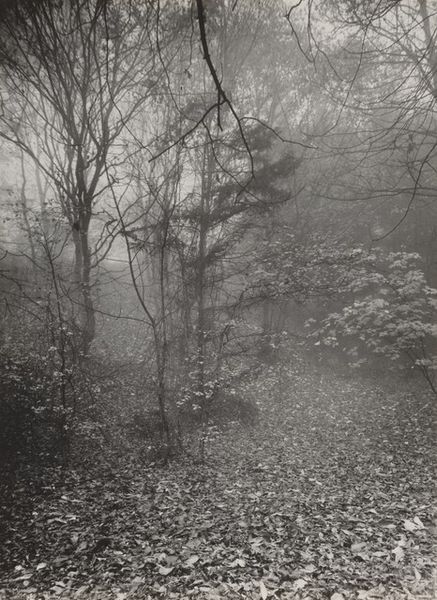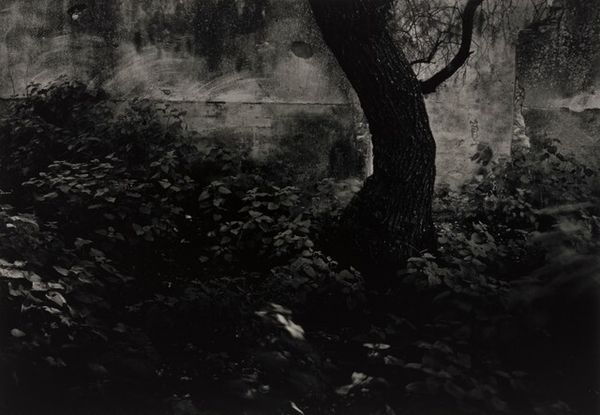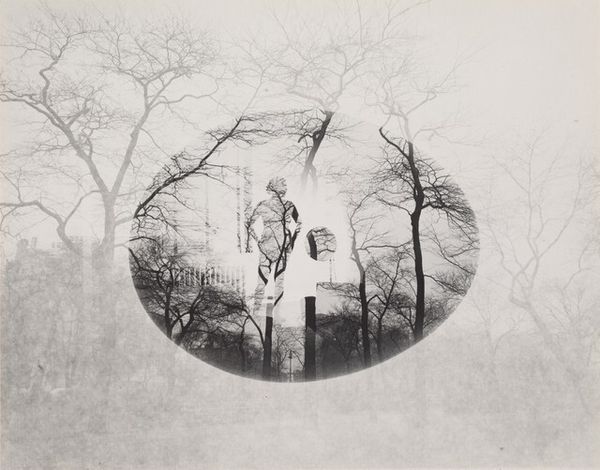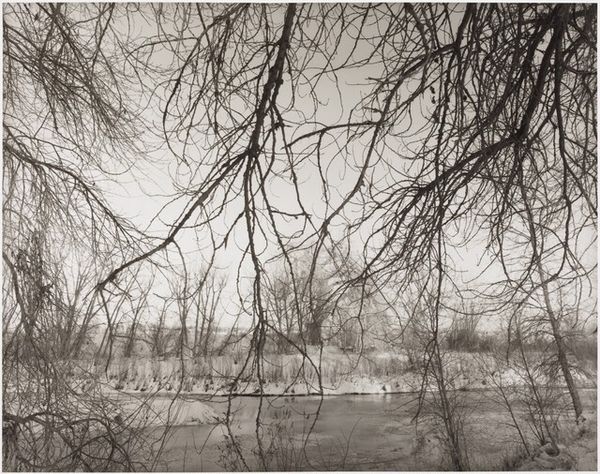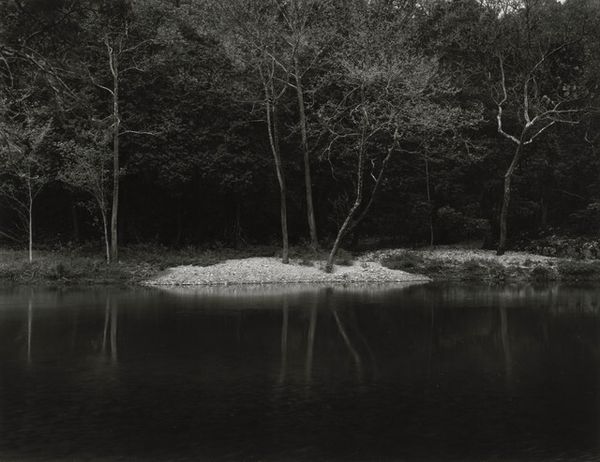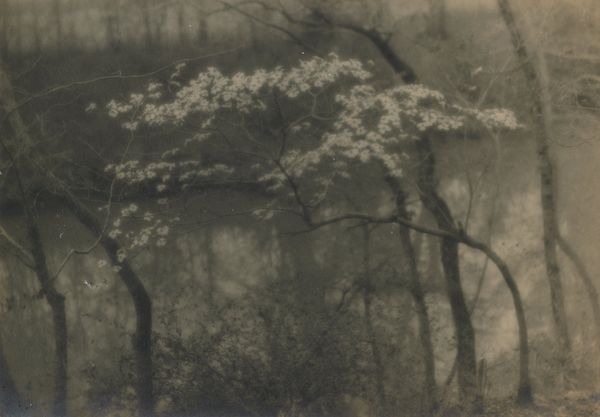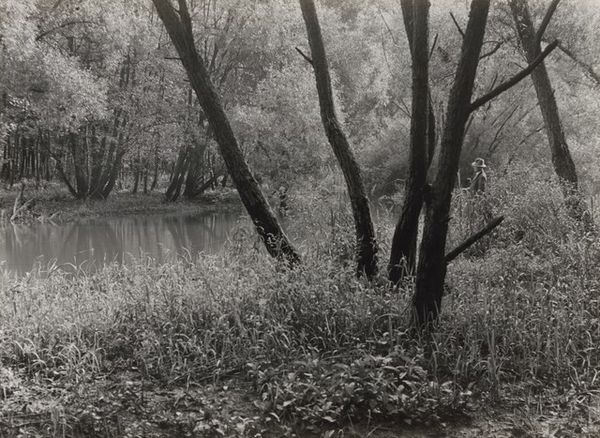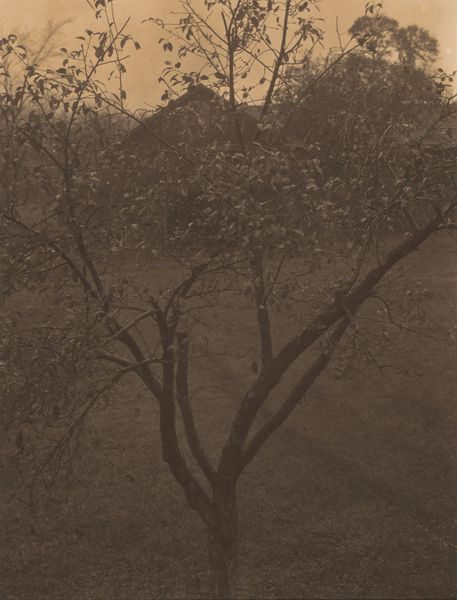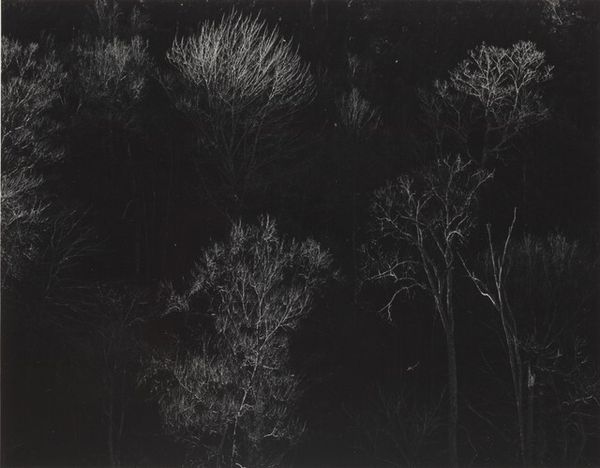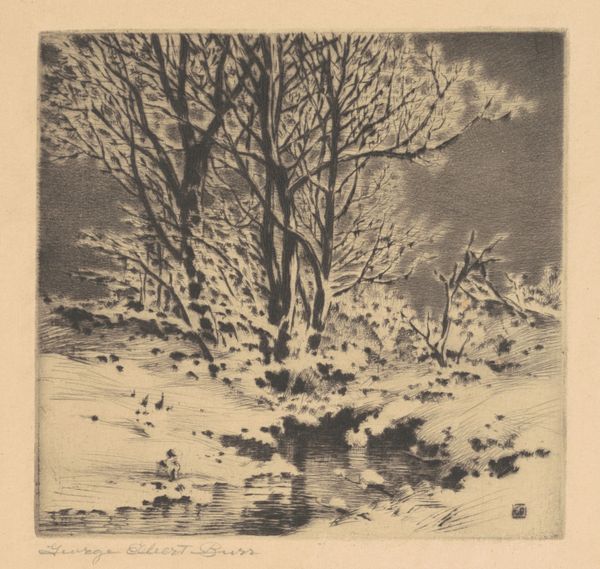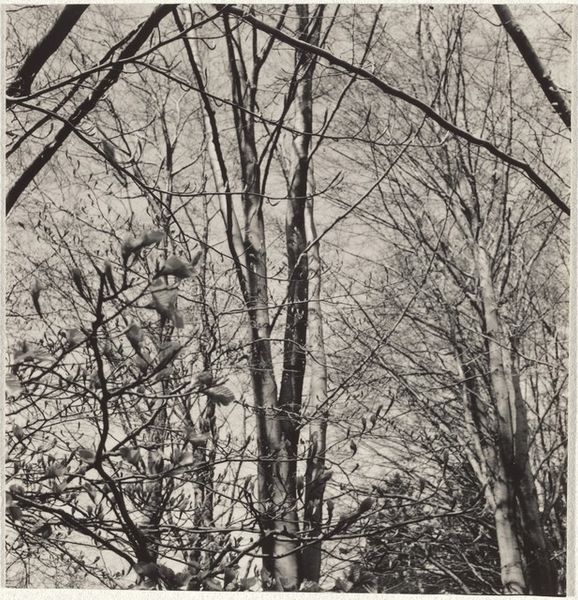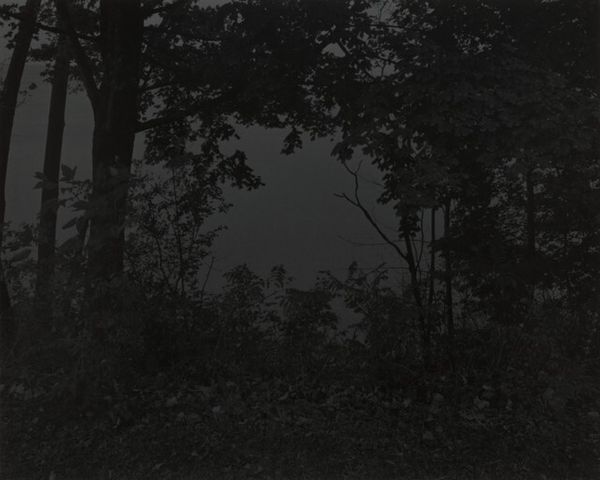
photography, gelatin-silver-print
#
black and white photography
#
landscape
#
photography
#
gelatin-silver-print
#
monochrome photography
#
monochrome
#
realism
#
monochrome
Dimensions: image: 19.5 × 20.9 cm (7 11/16 × 8 1/4 in.) sheet: 20.3 × 25.2 cm (8 × 9 15/16 in.)
Copyright: National Gallery of Art: CC0 1.0
Editor: This gelatin silver print, titled "View of Rennie Booher's House, Danville, Virginia," was created in 1973 by Emmet Gowin. I'm really struck by how this landscape is framed through what looks like a lens or a window. What stands out to you? Curator: It's a fascinating piece in how it isolates and presents a constructed view of the rural landscape. Consider the labor involved: from the mining and processing of the silver used in the print, to the manufacturing of the camera and lens, each element speaks to industrial processes that are often obscured in discussions of photographic art. The very act of framing this scene – selecting, capturing, and reproducing it – turns a commonplace view into a commodity, doesn't it? How do you think this material context influences our interpretation of the image? Editor: I guess it makes me think more about what’s *not* in the photo, like the surrounding area, the labour that may maintain this house and farmland. And that circular frame isolates it, kind of like a specimen. Curator: Exactly! This piece compels us to examine the power dynamics inherent in the photographic process. The act of 'viewing' is never neutral; it’s always mediated by material conditions, by technology, and by the photographer's choices – choices which are influenced by the society and markets he is working within. This is a 1970's image – what kind of politics of land use are apparent to you here? Editor: The lens creates such a defined and controlled space and is surrounded by barren woods. Is that supposed to be like a before-and-after image, civilization against untouched landscape? Curator: Precisely. This kind of work allows us to see how seemingly objective depictions of reality are in fact carefully constructed narratives, deeply embedded within material and social histories. Editor: Wow, that completely reframes how I saw this initially! It's not just a picture; it's about all the unseen hands and processes that made the image possible. Curator: Indeed. By examining the materials and production processes, we can reveal the underlying ideologies embedded in even the most seemingly straightforward image.
Comments
No comments
Be the first to comment and join the conversation on the ultimate creative platform.
